Megavolt ITER Injector & Concept Advancement
MITICA: THE NEUTRAL PARTICLE INJECTOR
of 1 MV for ITER, in 1:1 scale
To heat the plasma of ITER and future fusion reactors, Millions of watts of power can be input using neutral particle injection.
Neutral particle injection in is a critical external heating system for ITER.
Due to its extreme complexity, it requires an extensive research and development program to develop and test the system that will have to bring the plasma of the future fusion reactor to a temperature of 150 million degrees.
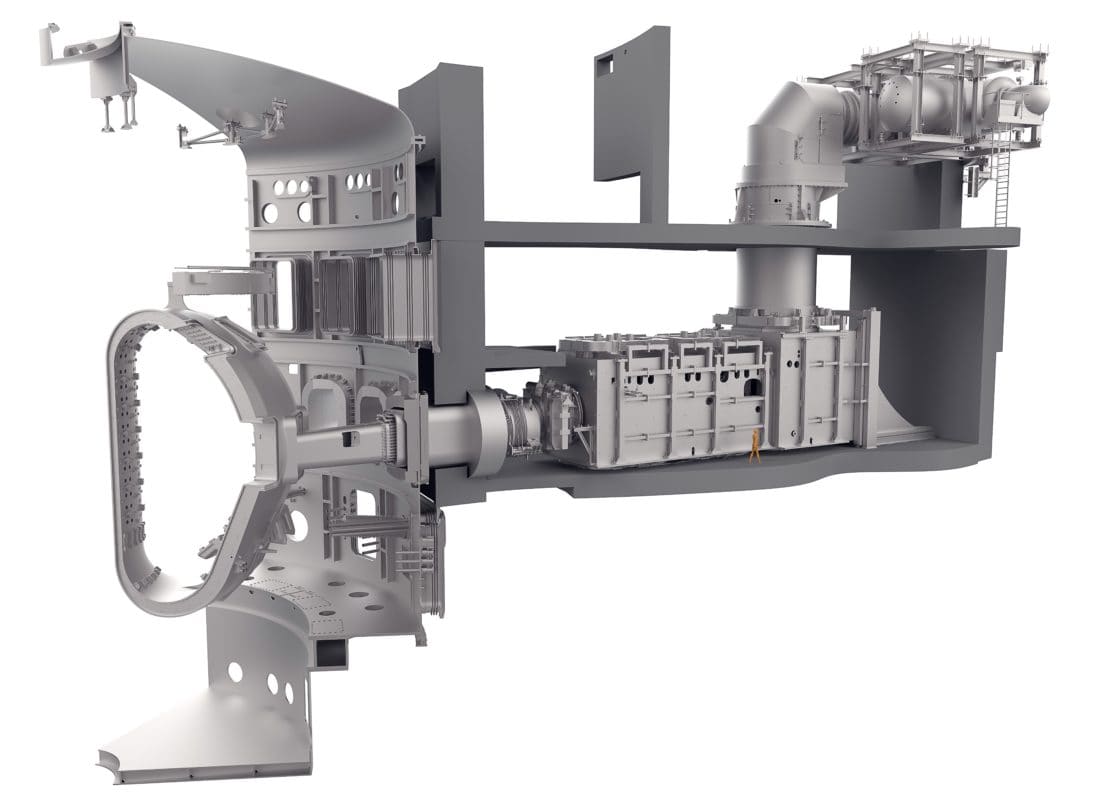
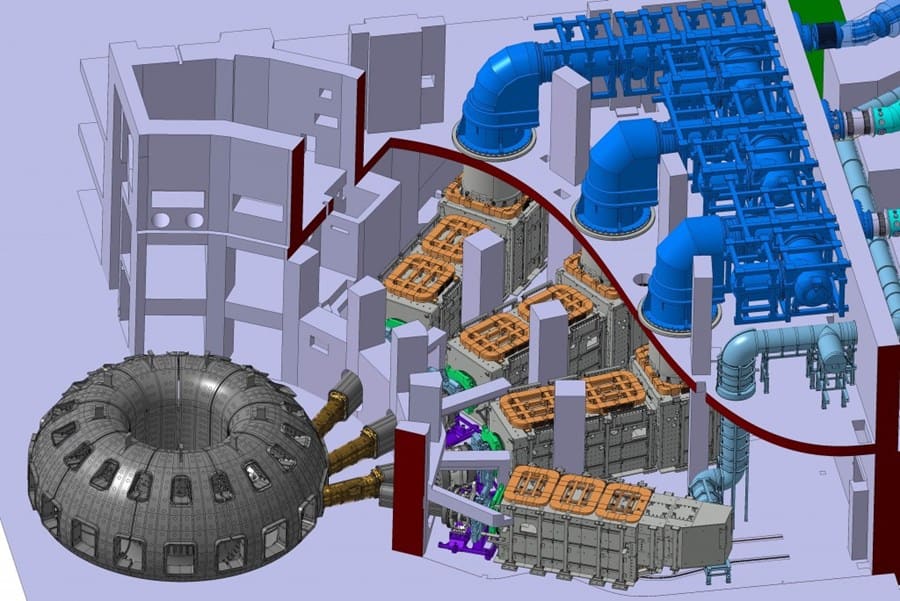
The physics and technology of the ITER heating system by means of neutral particle injection are developed in Padua on MITICA, the prototype of the 1 MV injector, as a core experiment of the NBTF Project research program.
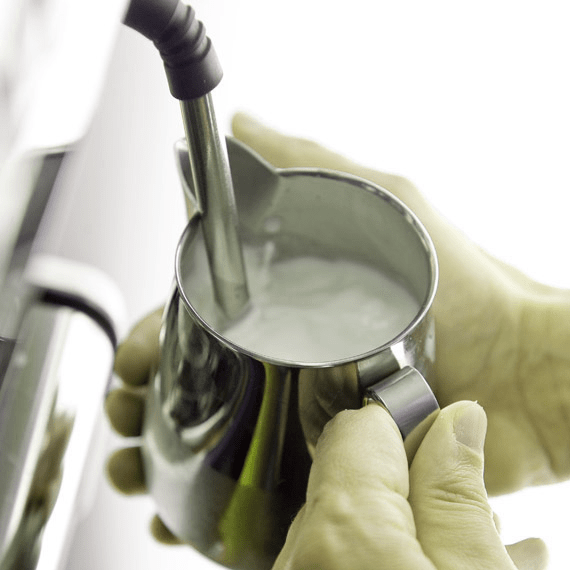
Imagine the jet of steam produced by a cappuccino machine which, penetrating into the milk, heats it; the neutral particle injection system works in a similar way. The milk represents the plasma, the steam jet represents the neutral particle beam.
The heating of the plasma of a fusion reactor occurs when a particle beam penetrates the plasma where, by collision with the particles it encounters, it transfers kinetic heat energy to the plasma itself.
Particles therefore play a fundamental role in this process, acquiring and losing electrons as we will see shortly.
To transfer energy, the particles must be accelerated while still outside the reactor, before penetrating inside where strong magnetic fields envelop and contain the plasma.
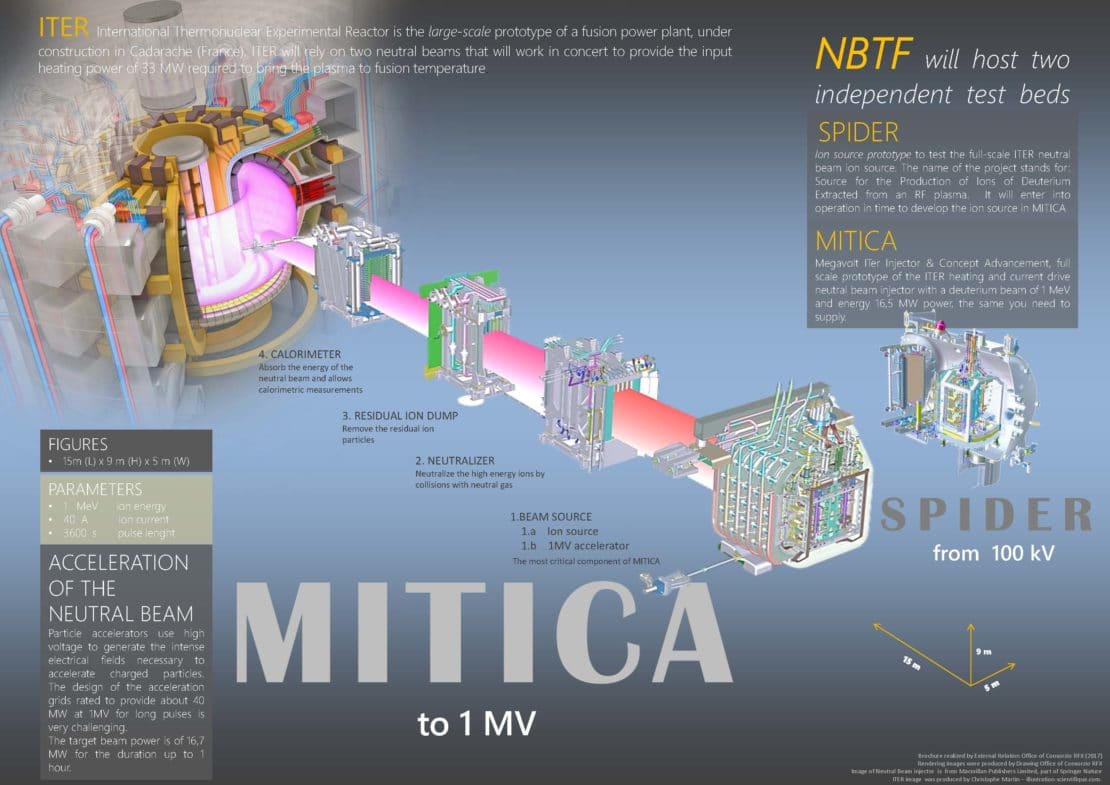
THE STAGES OF THE PARTICLE INJECTION SYSTEM
GENERATION OF PLASMA FROM NEUTRAL GAS
EXTRACTION OF NEGATIVE IONS FROM PLASMA
ACCELERATION OF THE NEGATIVE IONS
NEUTRALIZATION OF THE ION BEAM
INJECTION INTO THE REACTOR
For a deeper dive into the science, click here.
ITER will be equipped with two injectors and it is essential to have already optimized their operation before these are built and installed in the reactor.
MITICA, the 1:1 scale prototype of the neutral injector of ITER, is designed to PRODUCE A BEAM OF NEUTRAL PARTICLES, starting from negative ions of Hydrogen and Deuterium, accelerated to an energy of 1 MeV at a power of 16.5 MW for a duration of one hour.
The MITICA plant
The injector prototype is housed in a vacuum chamber (a 15 m x 5 m x 5 m steel cylinder) which contains its components: the 1MV particle beam source, the neutralizer, the residual ion dump (where non-neutral beam particles are captured) and finally the calorimeter, which measures the intensity of the beam and acts as a target in the terminal part of the prototype, as shown in the diagram.
The vacuum vessel is installed inside a reinforced concrete “bunker”, with walls 1.8 m thick, to shield from the radiation generated during operation and allow safe access to the area to personnel even during experiments.
A long steel “tube”, over 100 meters long and with a final diameter of over 3m, connects the power supplies to the injector. This “tube” is what in technical terms is called the Transmission Line (TL) and contains all the electrical power conductors at different potentials, the signal cables for the diagnostic systems, the pipes containing the cooling water for the injector source, and the operating gas (Hydrogen or Deuterium). To withstand the high electric fields present in the Transmission Line, the “tube” is filled with insulating gas (SF6) at a pressure of 6 bar.
Particular precautions have been adopted in line with the European legislation on the use and management of SF6 gas, as a greenhouse gas.
MITICA’s power supply system is very complex and includes: the throttle, ion source and residual ion dump system, as shown here.
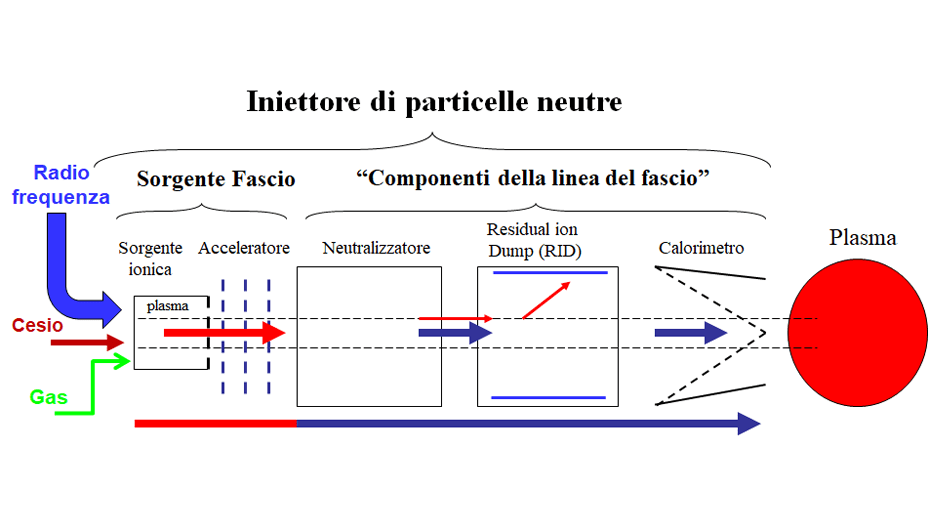
MITICA is equipped with a sophisticated diagnostics system designed to measure the parameters of the produced beam.